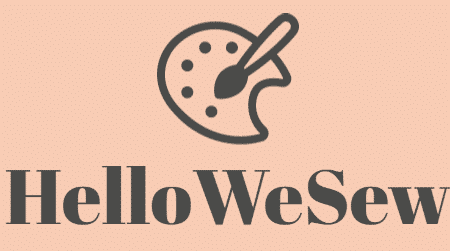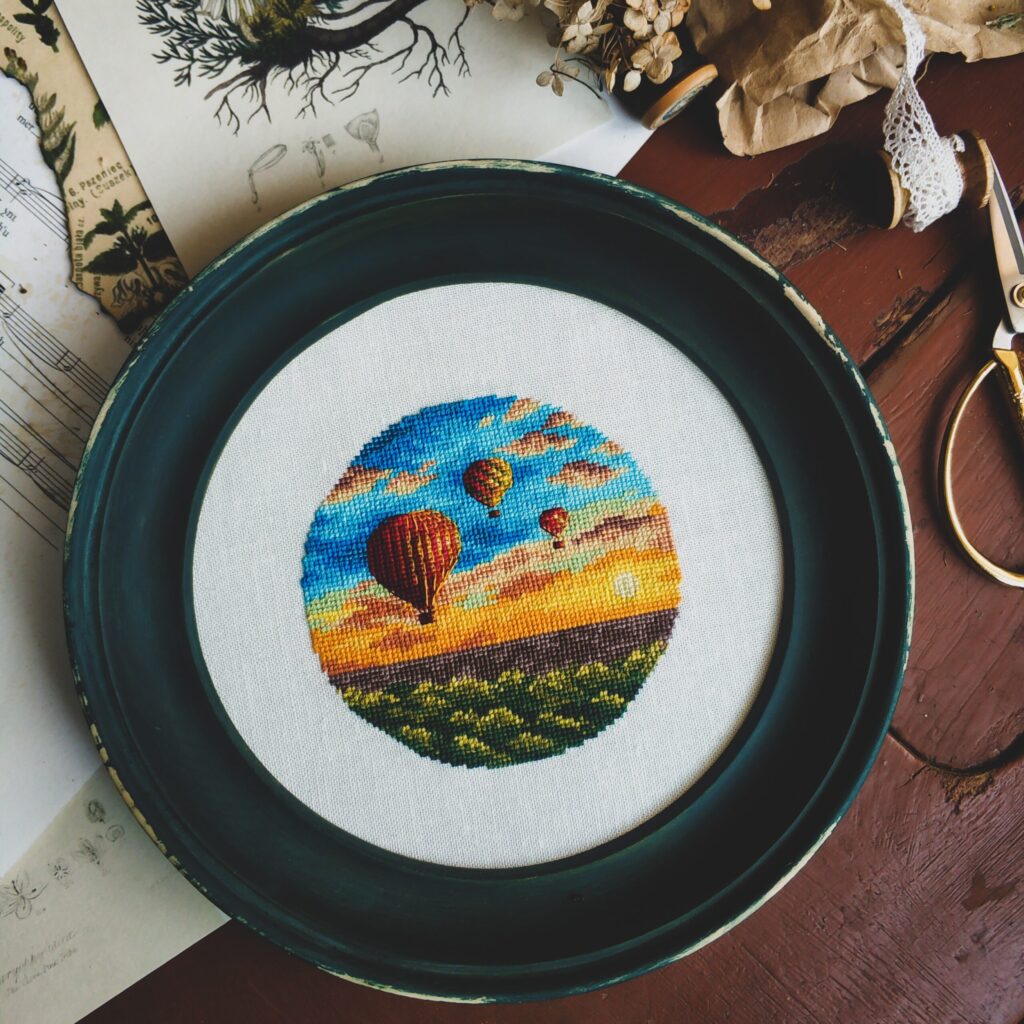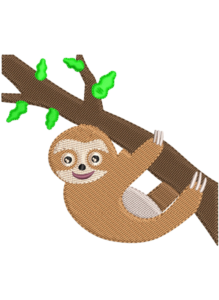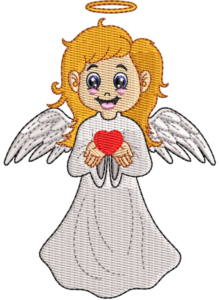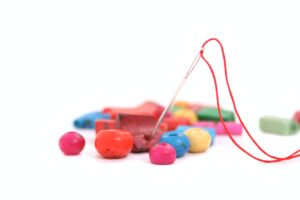WHAT ARE THE MOST COMMON STITCHES USED IN EMBROIDERY?
-
Running Stitch
The first of the most common embroidery stitches is the running stitch. As the name implies, it is made by running the needle in and out of the fabric. It is usually used to outline shapes or to join two pieces of fabric together.
If you are looking for a stitch that is easy to learn, this is the one for you. You can make a running stitch by hand or machine.
Check out this tutorial on YouTube for Running Stitch
-
Backstitch
Backstitch is commonly used for outlining shapes and for joining two pieces of fabric together. It is made by taking small stitches backwards and forwards.
The backstitch is a very sturdy stitch, so it is often used for applique work. You can make a backstitch by hand or machine.
Check out this tutorial on YouTube for Backstitch
-
Split Stitch
Split stitch is most commonly used for outlining shapes. It is made by taking a small stitch forwards and then splitting the thread before taking the next stitch.
This creates a line of stitches that are evenly spaced apart. You can make a split stitch by hand or machine.
Check out this tutorial on YouTube for Split Stitch
-
Satin Stitch
Satin stitch is used to fill in shapes with a smooth, even coverage. It is made by taking small stitches that are close together.
The satin stitch can be made by hand or machine.
Check out this tutorial on YouTube for Satin Stitch
-
Chain Stitch
Chain stitch is most commonly used for outlining shapes. It is made by taking a small stitch forwards and then making a loop with the thread before taking the next stitch.
This creates a chain of stitches that are evenly spaced apart. You can make a chain stitch by hand or machine.
Check out this tutorial on YouTube for Chain Stitch
-
Blanket Stitch
Blanket stitch is used to finish the edges of fabric. It is made by taking a small stitch forwards and then making a loop with the thread before taking the next stitch.
This creates a chain of stitches that are evenly spaced apart. You can make a blanket stitch by hand or machine.
Check out this tutorial on YouTube for Blanket Stitch
-
French Knot
French knot is most commonly used for adding small details to embroidery. It is made by taking a small stitch forwards and then wrapping the thread around the needle before taking the next stitch.
This creates a small knot in the fabric. You can make a French knot by hand or machine.
Check out this tutorial on YouTube for French Knot
-
Lazy Daisy
Lazy daisy is most commonly used for adding small details to embroidery. It is made by taking a small stitch forwards and then making a loop with the thread before taking the next stitch.
This creates a small flower in the fabric. You can make a lazy daisy by hand or machine.
Check out this tutorial on YouTube for Lazy Daisy
-
Straight Stitch
Straight stitch is one of the most versatile stitches and can be used for a variety of purposes. It is made by taking a small stitch forwards and then taking the next stitch without moving the fabric.
This creates a line of stitches that are evenly spaced apart. You can make a straight stitch by hand or machine.
Check out this tutorial on YouTube for Straight Stitch
-
Running Backstitch
Running backstitch is most commonly used for outlining shapes. It is made by taking a small stitch forwards and then taking the next stitch by going backwards.
This creates a line of stitches that are evenly spaced apart. You can make a running backstitch by hand or machine.
Check out this tutorial on YouTube for Running Backstitch
-
Herringbone Stitch
Herringbone stitch is most commonly used for outlining shapes. It is made by taking a small stitch forwards and then taking the next stitch by going backwards and forwards.
This creates a line of stitches that are evenly spaced apart. You can make a herringbone stitch by hand or machine.
Check out this tutorial on YouTube for Heringbone Stitch
-
Feather Stitch
Feather stitch is most commonly used for outlining shapes. It is made by taking a small stitch forwards and then taking the next stitch by going backwards and forwards.
This creates a line of stitches that are evenly spaced apart. You can make a feather stitch by hand or machine.
Check out this tutorial on YouTube for Feather Stitch
-
Cross Stitch
Cross stitch is most commonly used for creating patterns. It is made by taking a small stitch forwards and then taking the next stitch by going backwards and forwards.
This creates a small cross in the fabric. You can make a cross stitch by hand or machine.
Check out this tutorial on YouTube for Cross Stitch
-
Knotted Stitch
Knotted stitch is most commonly used for adding small details to embroidery. It is made by taking a small stitch forwards and then making a loop with the thread before taking the next stitch.
This creates a small knot in the fabric. You can make a knotted stitch by hand or machine.
Check out this tutorials on YouTube for Knotted Stitch
Knotted Chain Stitch
Knotted Pearl Stitch
-
Beaded Stitch
Beaded stitch is most commonly used for adding small details to embroidery. It is made by taking a small stitch forwards and then threading a bead onto the thread before taking the next stitch.
This creates a small bead in the fabric. You can make a beaded stitch by hand or machine.
Check out this tutorial on YouTube for Beaded Stitch
-
Bullion Stitch
Bullion stitch is most commonly used for adding small details to embroidery. It is made by taking a small stitch forwards and then wrapping the thread around the needle multiple times before taking the next stitch.
This creates a small coil in the fabric. You can make a bullion stitch by hand or machine.
Check out this tutorial on YouTube for Bullion Stitch
-
Buttonhole Stitch
Buttonhole stitch is most commonly used for finishing the edges of fabric. It is made by taking a small stitch forwards and then making a loop with the thread before taking the next stitch.
This creates a small hole in the fabric. You can make a buttonhole stitch by hand or machine.
Check out this tutorial on YouTube for Buttonhole Stitch
-
Couching Stitch
Couching stitch is most commonly used for adding small details to embroidery. It is made by taking a small stitch forwards and then placing a thread or ribbon onto the fabric before taking the next stitch.
This creates a small line of stitches that are evenly spaced apart. You can make a couching stitch by hand or machine.
Check out this tutorial on YouTube for Couching Stitch
-
Feather stitch
Featherstitch is most commonly used for outlining shapes. It is made by taking a small stitch forwards and then taking the next stitch by going backwards and forwards.
This creates a line of stitches that are evenly spaced apart. You can make a featherstitch by hand or machine.
Check out this tutorial on YouTube for Feather Stitch
-
Fly Stitch
Fly stitch is most commonly used for outlining shapes. It is made by taking a small stitch forwards and then making a loop with the thread before taking the next stitch.
This creates a small “V” shape in the fabric. You can make a fly stitch by hand or machine.
Check out this tutorial on YouTube for Fly Stitch
What is the most common embroidery stitch?
The most common embroidery stitch is the running stitch. It is made by running the needle in and out of the fabric. It is usually used to outline shapes or to join two pieces of fabric together. If you are looking for a stitch that is easy to learn, this is the one for you. You can make a running stitch by hand or machine.
Hello and goodbye! Thank you so much for visiting Hello We Sew. We hope you had a great time browsing our website and found everything you were looking for. If not, please feel free to contact us and let us know how we can improve. We love hearing from our visitors and are always looking for ways to improve our website. So, thank you again for stopping by and we hope to see you soon!
Hey, check out Do I need Embroidery Software?
Also, if you are looking for some great gifts check out Infinity Charm. They have some cute matching couple’s bracelets. Especially the Magnetic Heart Bracelet
